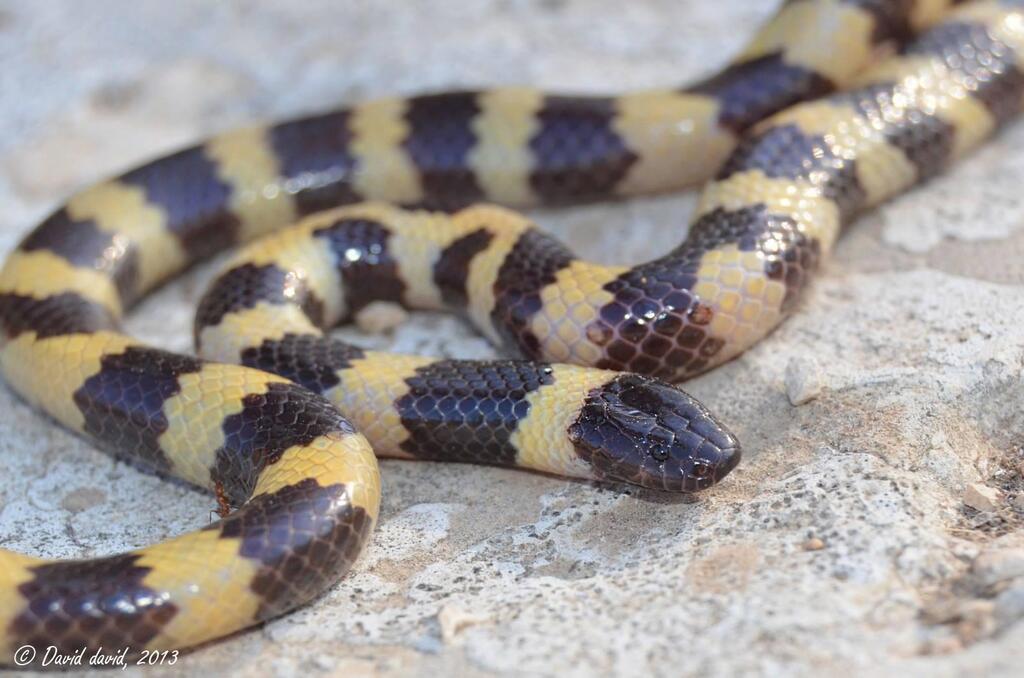An international research recently made a rather intriguing finding about a new snake "superfamily" that can be found in Israel and parts of Africa.
The that included a senior scientist from Tel Aviv University, found that Elapoidea, visually characterized by black and yellow rings covering their body, diverted from the serpentine evolutionary tree about 50 million years ago.
2 View gallery


Black and yellow rings are the distinguishing features of this snake
(Photo: David David)
Currently, only include three subspecies we know of, two of which live in east Africa. The third can be found in northern and central Israel, with some possibly already having made their way to Syria and Jordan along the Syro-African fault line.
The research, published by the Molecular Phylogenetics and Evolution peer-reviewed journal, included scientists from Finland, Belgium, Madagascar, Hong Kong, the United States, and Professor Shay Meiri from Israel.
"We believe we already know most animal species," says Meiri. "Once in a while, though, we're in for a surprise. That's what happened with the Micrelapoidea, a snake species belonging to the Elapoidea superfamily.
Originally it was believed it belongs to a different snake family, but DNA tests have proven we were wrong. Researchers for many years have been trying to establish which super family he belongs to, and this research was designed to answer that question."
Researchers examined the snake's Morphology (a branch of biology dealing with the study of the form and structure of organisms) via computerized magnetic simulation, focusing particularly on its skull.
"We've also simulated a variety of snake species that we thought he might belong to and applied the process of elimination," Prof. Meiri explains. "That's how we isolated specific markers that belonged to him alone, thus establishing that the Elapoidea diverged from the serpentine evolutionary tree 50 million years ago."


